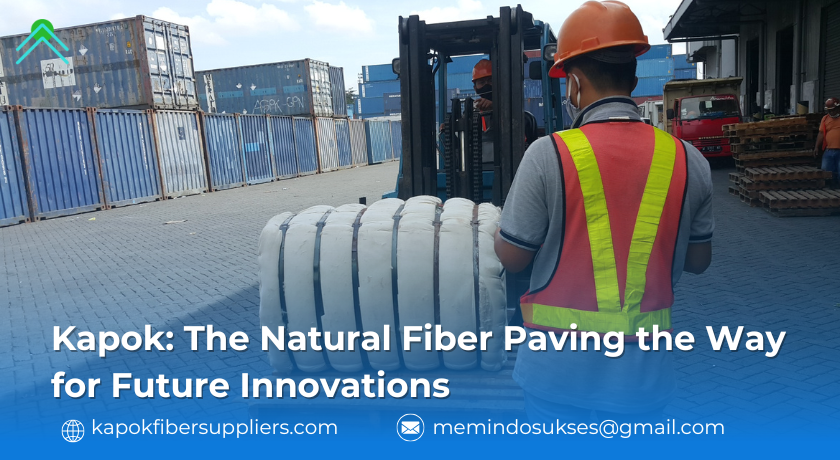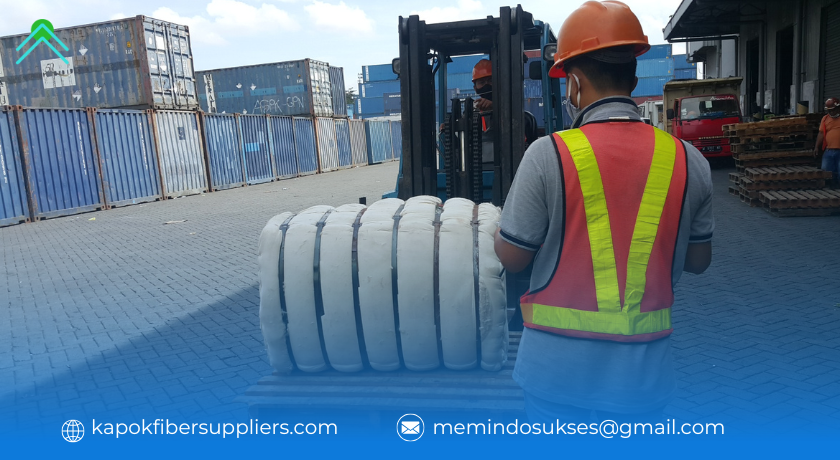
Kapok: The Natural Fiber Paving the Way for Future Innovations
Kapok—a light, buoyant fiber sourced from the seeds of the kapok tree (Ceiba pentandra)—has long been used for practical applications like pillow filling and life jackets. However, beyond these familiar uses, kapok is beginning to show its true potential as a versatile, eco-friendly material that could revolutionize industries from advanced materials science to space exploration. The future of kapok is unfolding in exciting new ways, and it may soon play a key role in solving some of the planet’s most pressing challenges.
Kapok in Advanced Materials Science: A Surprising New Frontier
In the world of materials science, innovation often draws inspiration from nature’s most efficient solutions. Kapok’s natural properties—its lightweight structure, incredible buoyancy, and water resistance—make it an ideal candidate for the development of advanced materials with new, sustainable characteristics.
1. Smart Materials and Bio-Inspired Engineering
Kapok’s internal structure, consisting of hollow, air-filled fibers, is a marvel of natural engineering. This lightweight and resilient design is increasingly being studied for its potential application in smart materials. Researchers are investigating how the fiber’s ability to maintain its shape and resist compression can inspire the development of new materials for soft robotics, wearable technology, and even self-healing materials.
Imagine a future where kapok fibers are integrated into soft robotics—robots designed to mimic the flexibility and dexterity of the human body. By using kapok’s lightweight, water-resistant fibers in the construction of robotic skins or artificial muscles, engineers could create robots that are both highly efficient and environmentally sustainable. These robots could serve in a wide range of applications, from healthcare to manufacturing, all the while reducing the carbon footprint of traditional materials.
2. Reinforced Composite Materials
Kapok could also play a significant role in the development of reinforced composite materials. In industries such as aerospace, automotive, and construction, there’s a constant need for lightweight, durable materials that don’t compromise strength. By combining kapok fibers with biodegradable resins, scientists are exploring the creation of biocomposites—materials that are strong, light, and compostable.
These biocomposites could be used in everything from car parts to building materials, significantly reducing the environmental impact of industries that rely on heavy, non-renewable materials like metals and plastics. With its incredible buoyancy and resilience, kapok could help to reduce weight in vehicles and machinery, leading to greater energy efficiency and a smaller carbon footprint.
Kapok: A Sustainable Material for Space Exploration
While kapok may seem like an earthly material, it’s beginning to garner attention in space exploration due to its unique properties. As humanity prepares for deeper space exploration, scientists and engineers are constantly looking for ways to reduce the weight of equipment while maximizing its effectiveness.
1. Insulation in Spacecrafts
One of the biggest challenges in space exploration is creating materials that can provide effective insulation in the harsh environment of outer space. Kapok’s water-resistant, insulating qualities make it an ideal candidate for this task. Researchers are experimenting with using kapok fibers in the construction of spacecraft insulation or space suits that protect astronauts from extreme temperatures.
Unlike traditional insulation materials, kapok’s natural composition could offer superior thermal regulation, helping to keep spacecraft and space stations at a consistent temperature. Given that kapok fibers are biodegradable and lightweight, they could reduce the environmental impact of the space missions while maintaining high levels of performance.
2. Lightweight and Durable Packaging for Space Missions
Packing and transporting equipment for space missions is a critical challenge due to the weight and size constraints of spacecraft. Kapok’s remarkable buoyancy and lightness make it an ideal candidate for use in spacecraft packaging. The fiber can be used in protective padding for delicate equipment or in the development of sustainable, eco-friendly packaging that helps reduce waste in space.
Currently, many space missions rely on single-use, plastic-based packaging that contributes to the growing issue of space debris. By using kapok as a biodegradable alternative, space agencies can take a giant leap toward reducing their environmental footprint while ensuring that all materials are safely transported.
Kapok and Biodiversity: A Hidden Ally in Forest Conservation
Kapok’s role doesn’t stop at material innovation—it is also an essential player in the preservation of biodiversity. The kapok tree is a keystone species in tropical rainforests, providing habitat and food for countless species of wildlife. But beyond its ecological importance, kapok farming can help sustain local communities and foster more sustainable forestry practices.
1. Agroforestry and Sustainable Farming
Kapok trees grow best in agroforestry systems, where they are cultivated alongside other crops. This approach not only provides a sustainable income for farmers but also helps to restore degraded land and promote biodiversity. The deep-root systems of kapok trees can help prevent soil erosion and improve soil fertility, contributing to healthier ecosystems.
In addition, by integrating kapok into agroforestry systems, farmers can avoid the harmful practices of monoculture farming, where only a single crop is grown over large areas of land. Monocultures often deplete the soil and reduce biodiversity, but kapok-based agroforestry provides a solution that supports both people and nature.
2. Protecting Forests through Sustainable Harvesting
Unlike crops that need to be replanted every season, kapok trees can be harvested repeatedly for many years without damaging the environment. As demand for kapok increases, there is an opportunity to sustainably harvest this fiber from naturally occurring kapok trees or plantations, providing an economic incentive for local communities to protect and conserve their forests.
Kapok tree plantations can become an important source of income for communities living near rainforests, reducing the pressure to cut down natural forests for timber. By protecting these habitats, we not only preserve the kapok tree but also the myriad of species that depend on the rainforest for survival.
The Road Ahead: Kapok as a Global Game-Changer
As the world faces pressing challenges like climate change, pollution, and resource depletion, materials like kapok present a unique opportunity to move toward a more sustainable, circular economy. Whether it’s reducing the carbon footprint of modern technologies, supporting space exploration, or helping protect biodiversity, kapok holds untapped potential across numerous sectors.
In the near future, kapok could become a cornerstone of a new, greener economy—a material that serves not only human needs but also the health of our planet. As research into kapok continues to expand, its use could radically shift the way we think about natural fibers, sustainability, and technological innovation.
Conclusion: Kapok’s Bright Future
The future of kapok is anything but ordinary. As an advanced material, a tool for environmental conservation, and a vital resource for sustainable industries, kapok is poised to play a pivotal role in addressing some of the most critical challenges of the 21st century. From space exploration to forest conservation, the humble kapok tree has much to offer.
As we move forward, let’s embrace kapok as a natural ally in the quest for sustainability. Its potential is vast, and it’s only just beginning to be realized.

